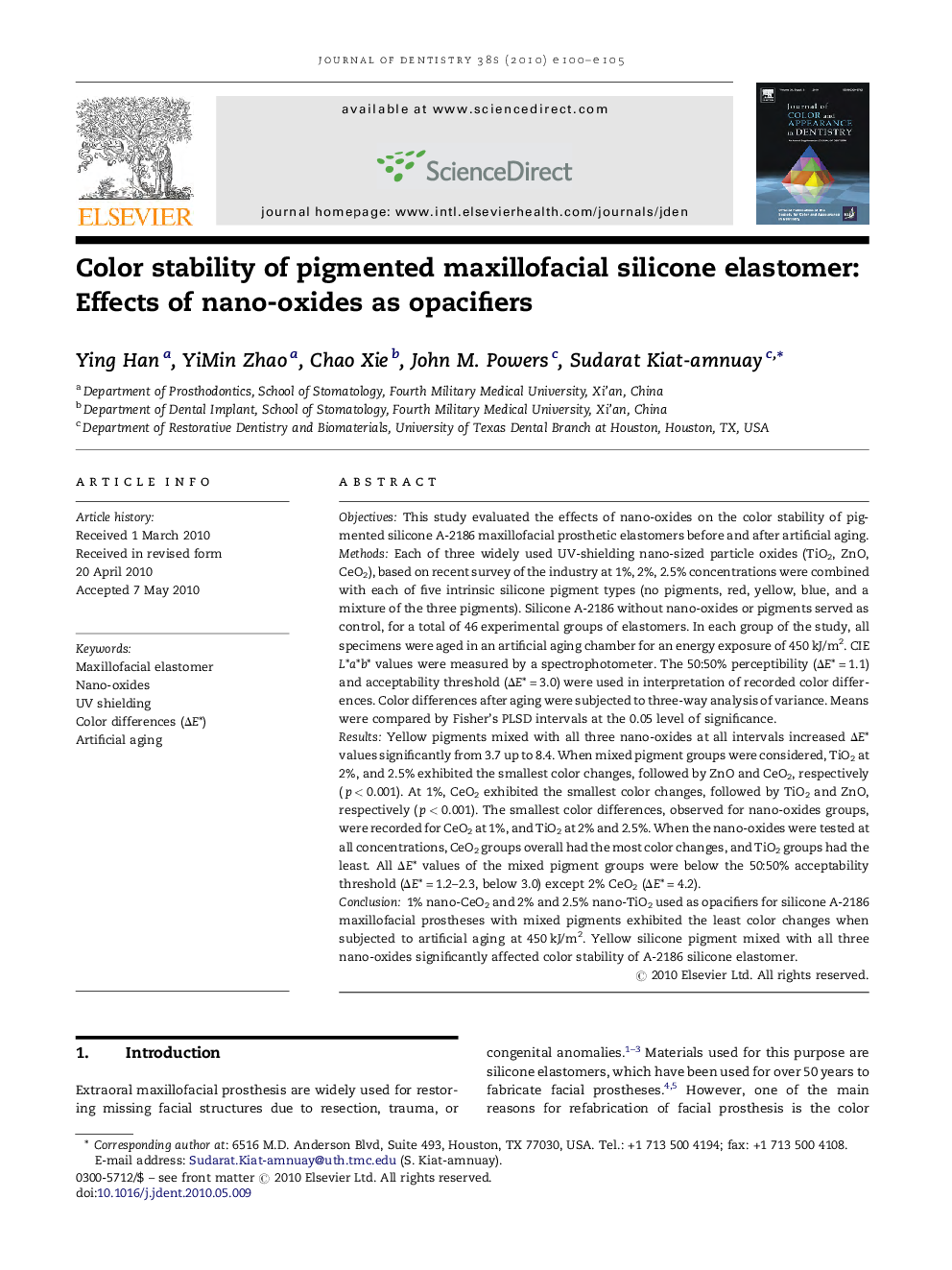| کد مقاله | کد نشریه | سال انتشار | مقاله انگلیسی | نسخه تمام متن |
|---|---|---|---|---|
| 3145295 | 1197063 | 2010 | 6 صفحه PDF | دانلود رایگان |

ObjectivesThis study evaluated the effects of nano-oxides on the color stability of pigmented silicone A-2186 maxillofacial prosthetic elastomers before and after artificial aging.MethodsEach of three widely used UV-shielding nano-sized particle oxides (TiO2, ZnO, CeO2), based on recent survey of the industry at 1%, 2%, 2.5% concentrations were combined with each of five intrinsic silicone pigment types (no pigments, red, yellow, blue, and a mixture of the three pigments). Silicone A-2186 without nano-oxides or pigments served as control, for a total of 46 experimental groups of elastomers. In each group of the study, all specimens were aged in an artificial aging chamber for an energy exposure of 450 kJ/m2. CIE L*a*b* values were measured by a spectrophotometer. The 50:50% perceptibility (ΔE* = 1.1) and acceptability threshold (ΔE* = 3.0) were used in interpretation of recorded color differences. Color differences after aging were subjected to three-way analysis of variance. Means were compared by Fisher's PLSD intervals at the 0.05 level of significance.ResultsYellow pigments mixed with all three nano-oxides at all intervals increased ΔE* values significantly from 3.7 up to 8.4. When mixed pigment groups were considered, TiO2 at 2%, and 2.5% exhibited the smallest color changes, followed by ZnO and CeO2, respectively (p < 0.001). At 1%, CeO2 exhibited the smallest color changes, followed by TiO2 and ZnO, respectively (p < 0.001). The smallest color differences, observed for nano-oxides groups, were recorded for CeO2 at 1%, and TiO2 at 2% and 2.5%. When the nano-oxides were tested at all concentrations, CeO2 groups overall had the most color changes, and TiO2 groups had the least. All ΔE* values of the mixed pigment groups were below the 50:50% acceptability threshold (ΔE* = 1.2–2.3, below 3.0) except 2% CeO2 (ΔE* = 4.2).Conclusion1% nano-CeO2 and 2% and 2.5% nano-TiO2 used as opacifiers for silicone A-2186 maxillofacial prostheses with mixed pigments exhibited the least color changes when subjected to artificial aging at 450 kJ/m2. Yellow silicone pigment mixed with all three nano-oxides significantly affected color stability of A-2186 silicone elastomer.
Journal: Journal of Dentistry - Volume 38, Supplement 2, 2010, Pages e100–e105